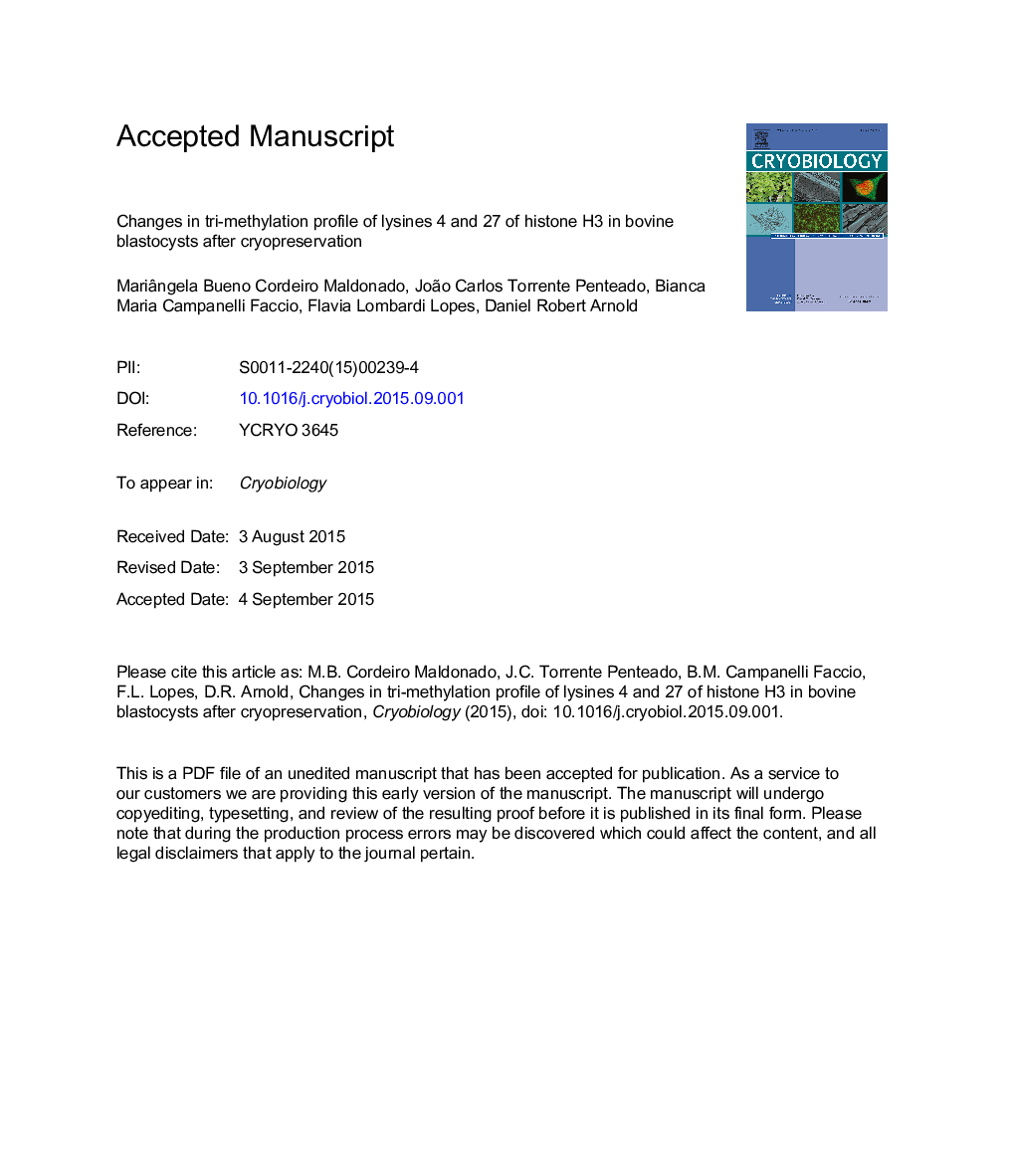| Article ID | Journal | Published Year | Pages | File Type |
|---|---|---|---|---|
| 10927679 | Cryobiology | 2015 | 19 Pages |
Abstract
Pregnancy rates from cryopreserved embryos remain lower than non-cryopreserved counterparts, even though these embryos appear morphologically normal. How epigenetic events, such as histone modifications, are affected by cryopreservation of embryos remains unknown. The current study evaluated the effect of conventional freezing/thawing of in vitro produced bovine blastocyst embryos on histone modifications, H3K4me3 and H3K27me3. At day 7 of in vitro culture, blastocyst stage embryos were either frozen by conventional freezing method (â0.5 °C/min in 1.5 M ethylene glycol; F/T group) or remained in culture for an additional 18 h (Ctrl). Frozen embryos were stored in liquid N2 for 14 days, thawed and placed in culture for 36 h for recovery. Control and re-expanded frozen-thawed blastocysts from both groups were fixed in 4% paraformaldehyde and stored in PBS +0.1% triton-X at 4 °C. Immunofluorescence, utilizing antibodies against H3K4me3 and H3K27me3, was conducted and staining intensity was analyzed as percentage of total DNA. Day 7 blastocyst development rate was 35.55% (352/990) with blastocyst recovery at 54.23% (77/142) 36 h post-thawing. Total cell numbers per blastocyst were not different amongst groups (117.8 ± 12.49 and 116.1 ± 14.69, F/T and Ctrl groups respectively). Global staining for the active mark, H3K4me3, was lower in F/T blastocysts compared to Ctrl (17.24 ± 2.80% vs. 34.95 ± 3.77%; P < 0.01). However, staining for the inhibitory mark, H3K27me3, was nearly 2-fold higher in F/T blastocysts (40.41 ± 3.83% vs. 21.29 ± 3.92%; P < 0.01). These results suggest that bovine blastocysts, subjected to conventional freezing methods, have altered histone modifications that may play a role in poor pregnancy rates.
Related Topics
Life Sciences
Agricultural and Biological Sciences
Agricultural and Biological Sciences (General)
Authors
Mariângela Bueno Cordeiro Maldonado, João Carlos Torrente Penteado, Bianca Maria Campanelli Faccio, Flavia Lombardi Lopes, Daniel Robert Arnold,
